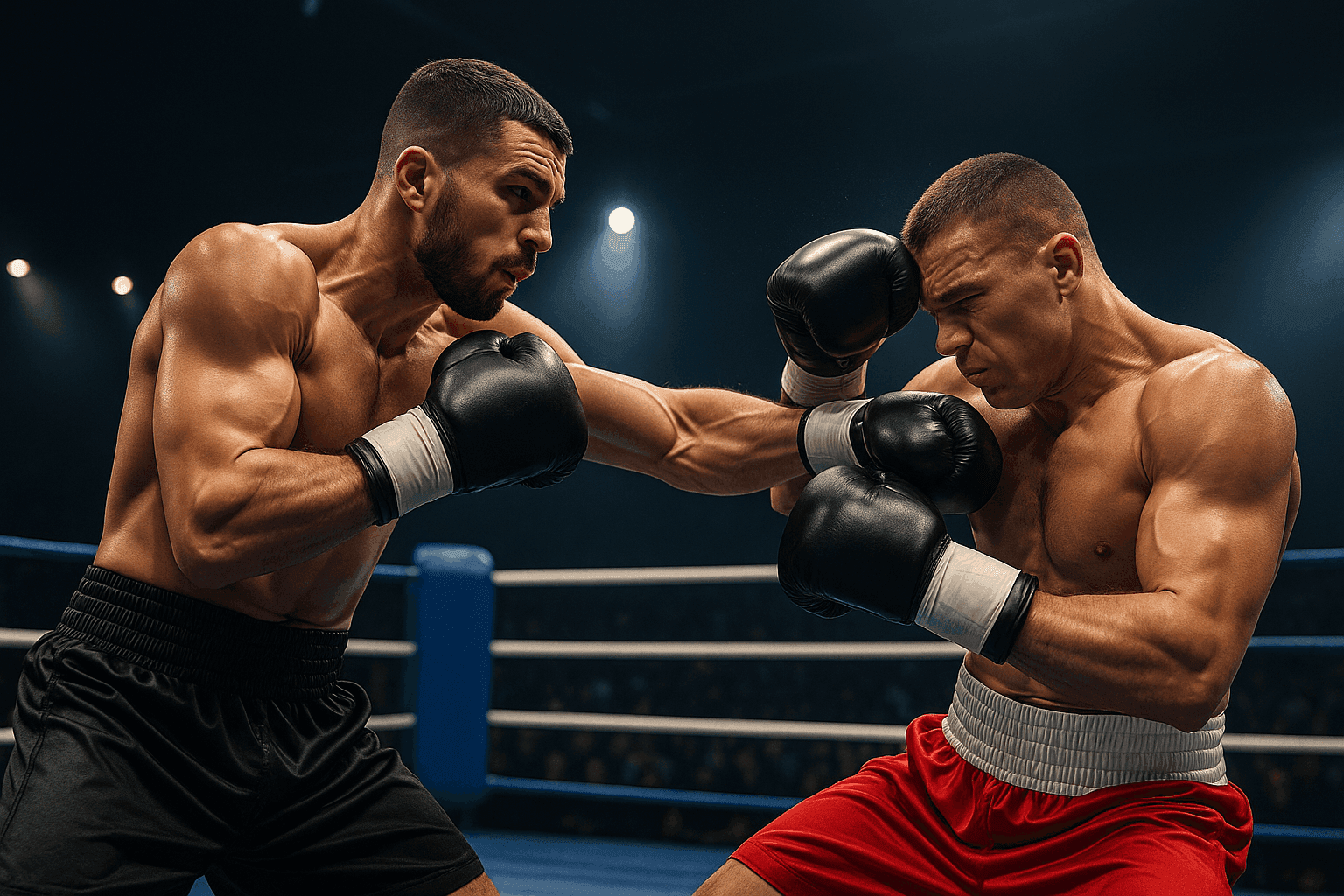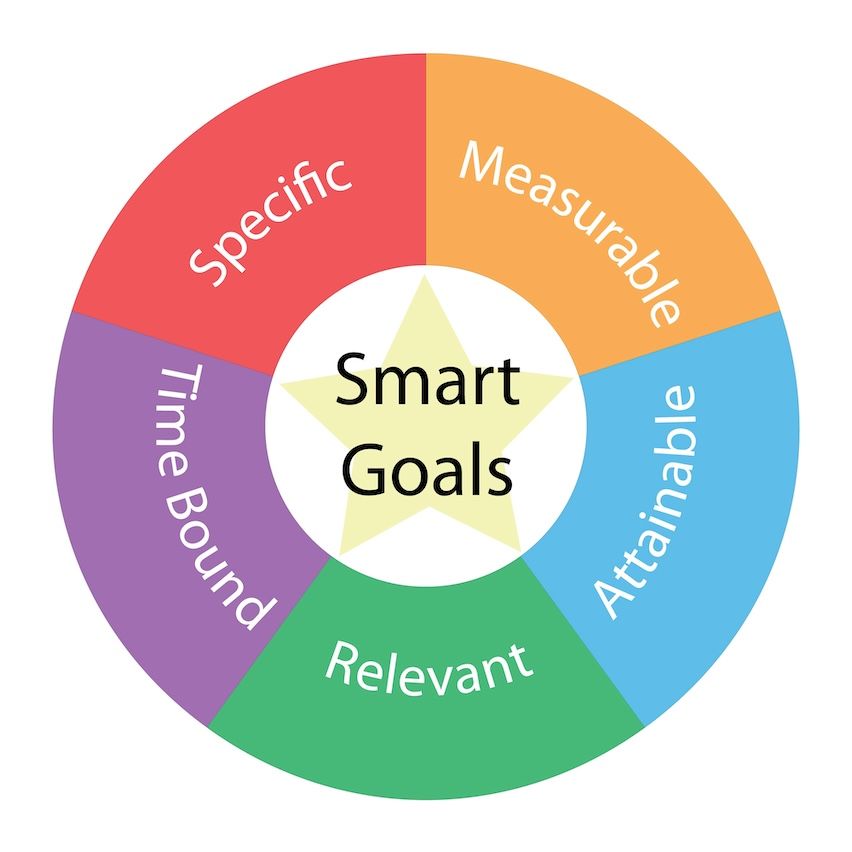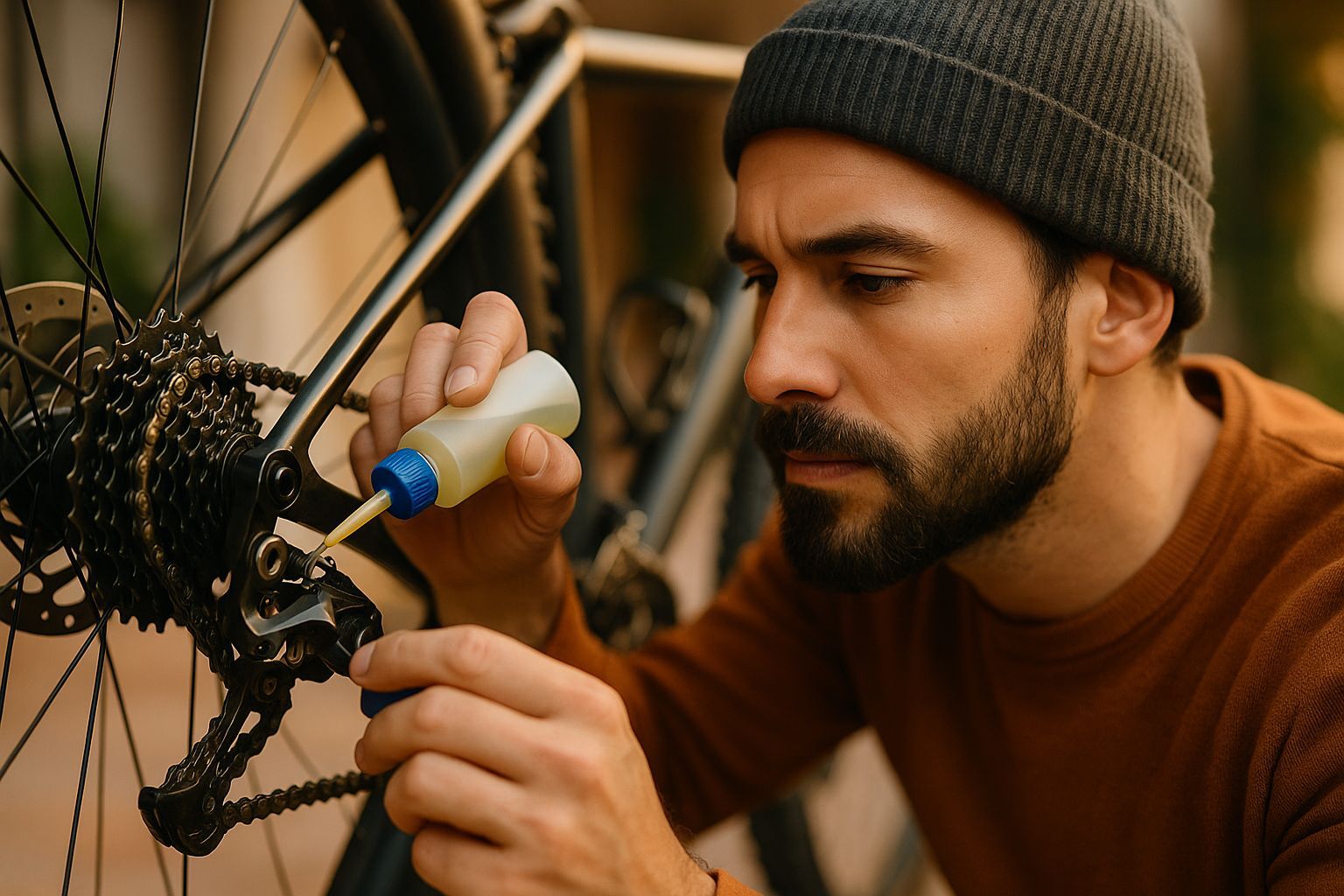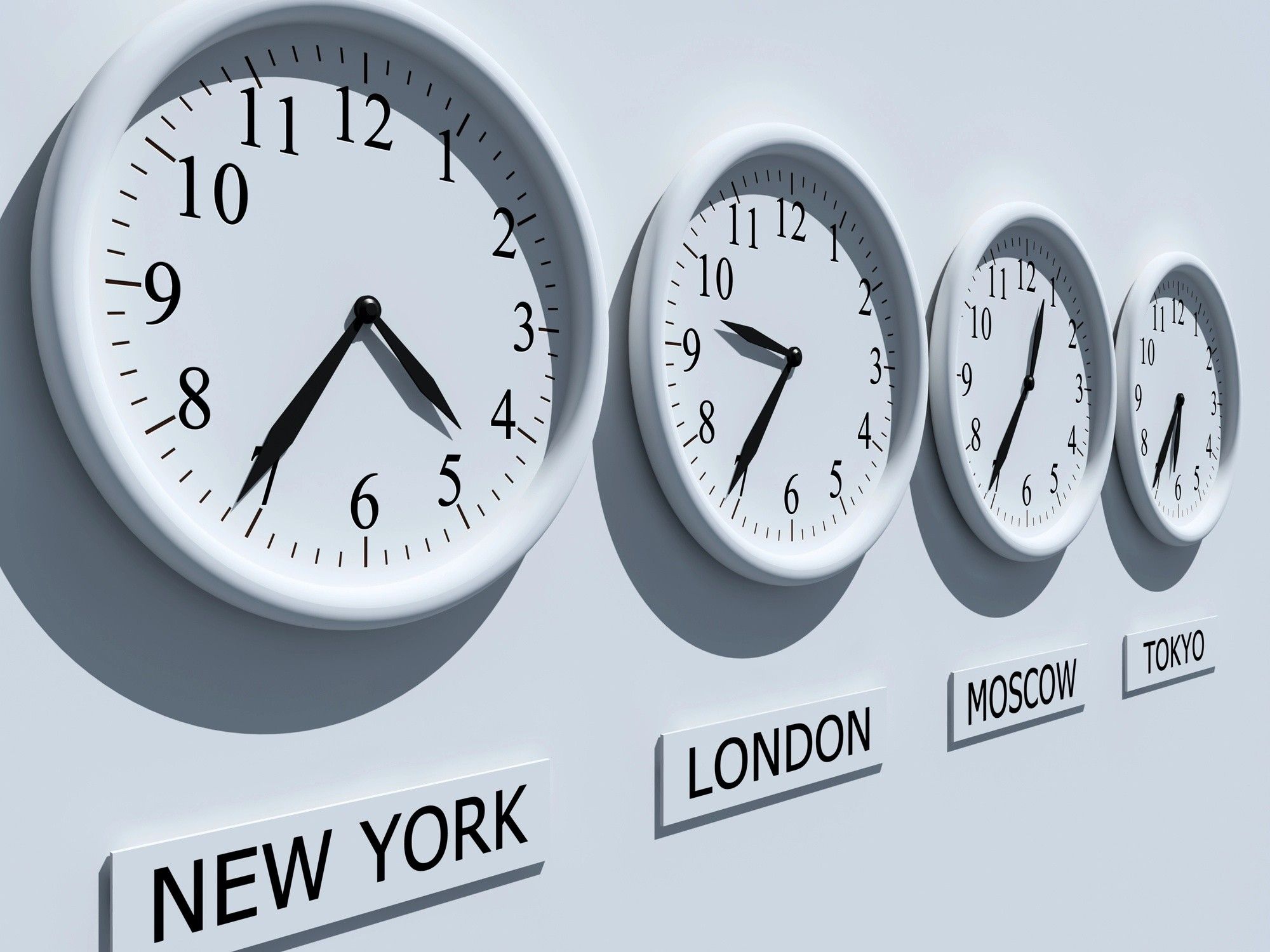Contents
the email tool that makes email marketing simple
How to Build a Newsletter Marketing Strategy That Works
Published: June 7, 2025
Ever wondered why some newsletters grab your attention immediately, while you put others straight into the trash? The secret isn’t luck—it's having a clear strategy. Think of your newsletter like a bicycle: if the chain isn't connected, no matter how hard you pedal, you're stuck. This article shows you how to get that chain back on and moving smoothly. You'll learn simple steps to set goals, understand your audience, and create content people actually want to read. Whether you're just starting or need a fresh start, by the end of this guide, you'll have everything you need to create newsletters that drive real results in your marketing campaigns. Ready to get rolling?
Define Your Newsletter Goal
To create an effective digital marketing newsletter strategy, start with a well-defined goal. A strong goal helps you shape content and track progress.
Use the SMART framework to set your goal:
-
Specific: State exactly what you want to achieve.
-
Measurable: Decide how you’ll measure success.
-
Achievable: Ensure your goal is realistic given available resources.
-
Relevant: Align your goal with your business objectives.
-
Time-bound: Set a deadline to stay on track.
For example, instead of saying "boost sales," define a more specific goal like:
"Increase sales of related products by 15% by June 30."
This goal will drive your newsletter strategy and influence the metrics you choose. For instance, a goal to increase sales by 15% could lead to offering bundles or discounts, with the metric "Revenue from Bundles" tracking your progress.
Here’s how your goals shape the strategies you use and the metrics you track:
| Business Goal | Email Newsletter Strategy | Metric to Track |
|---|---|---|
| Increase sales by 15% | Offer bundles or discounts on related products | Revenue from bundles or special offers |
| Boost repeat purchases by 20% | Recommend products based on past purchases | Repeat purchase conversion rate |
| Reduce churn by 10% | Send special offers to inactive subscribers | Re-engagement rate |
| Increase brand awareness | Share stories or customer experiences | Open rates, social media mentions |
Focus on one primary goal each quarter to ensure your content stays focused and impactful. A secondary goal can support the main objective, but avoid overcomplicating the strategy.
Define Your Success Metrics (KPIs)
Once your goal has been well defined, it’s time to select the right metrics to track your progress. Metrics show how well your strategy is working and whether you're on track to meet your goal.
Choose key performance indicators (KPIs) that directly align with your primary goal. These metrics help you evaluate your newsletter's effectiveness.
Two essential metrics to focus on are:
- Open Rate: Indicates how many recipients open your emails, showing the effectiveness of your subject lines and content. A higher open rate means your audience is engaged.
- Revenue-per-Email: Measures the revenue generated from each email. It tracks how well your email content drives sales or conversions.
These two metrics provide insights into whether your strategy is delivering the results you want.
Industry Benchmarks
While benchmarks can vary, they provide useful guidelines to set realistic targets:
-
Open Rate: Aim for 40–50%, but adjust according to your audience’s behavior.
-
Revenue-per-Email: While this varies by product and audience, focus on steady improvement that reflects your specific business goals.
These benchmarks serve as useful references but should be used as guidelines, not rigid targets. Adjust based on your industry and audience.
Simple Tracking Methods
To track your newsletters' success, use simple tools like:
-
Coupon Codes: Provide a unique code (e.g., NEWSLETTER10) in your emails to track purchases directly tied to your campaign.
-
Tracking Links: Add a UTM tag (e.g., ?utm_source=newsletter) to links in your email to track traffic coming from your campaign.
Always test these tracking methods before sending your emails to ensure the data is accurate.
By defining clear goals and focusing on the right metrics, you can measure your newsletter’s performance and refine your strategy for better results. For a deeper dive into these KPIs, read our detailed guide to email marketing metrics.
Know Your Audience
Knowing your readers is the first step towards having a successful newsletter. When you understand who your subscribers are and what they need, your emails become helpful and relevant. Let's explore how you can get to know your readers better.
Create Subscriber Personas
A persona is a short profile of your typical reader. To create a persona template, answer these questions:
-
Who are they? Age, job, daily life, and interests
-
What problems do they have? Think of issues your emails can help solve
-
What do they want from your emails? Practical tips, useful advice, discounts, or product ideas
Example of a persona:
Busy Professional: Age 25–40, long workdays, limited free time. Wants tips that save time or money.
Segment Your Subscriber List
Segmentation means grouping your subscribers based on their interests or behaviors. Common ways to segment are:
-
Behavior: How often subscribers open emails, links they click, and items they buy
-
Location: Subscribers grouped by country, city, or time zone
-
Interests: Subscribers who prefer discounts, tutorials, or product updates
When you segment, each group in your target audience receives content they care about. Active readers get deeper insights. Less-active readers get shorter updates or gentle nudges.
Review and update your segments regularly, as subscribers’ interests change over time.
Keep Learning About Your Readers
People’s needs evolve. Every few months, review subscriber personas and segments. Use surveys, subscriber feedback, and click data to stay up-to-date. This will ensure your newsletter stays helpful and interesting.
One good way to know your readers better is by analyzing the newsletters they already read. You’ll find a step-by-step guide in the next section.
Competitor Analysis: Find Your Edge

Decide How Often to Send Emails
Start by subscribing to competitor newsletters and tracking their email frequency over at least a month. This will give you a good sense of what’s typical in your niche. Instead of matching the busiest competitor right away, start with fewer emails and maintain a consistent schedule. Watch your open rates and unsubscribe rates closely, adjusting the frequency as needed. Being consistent without overwhelming your readers builds loyalty.
Offer Better Content by Filling Gaps
Look carefully at the topics your competitors cover. Note areas they handle well and topics they don’t address fully or at all. If your product solves problems they overlook, highlight these points. For popular topics, offer a fresh approach by providing detailed tips, practical guides, or relatable examples. This extra effort helps your newsletter stand out as genuinely helpful.
Create a Unique Visual Style
Your newsletter's design should grab attention. Review competitor emails carefully, paying attention to their layouts, colors, and images. Choose a visual style that fits your brand but is noticeably different from competitors. If they use bold, vibrant colors, you might go with a simpler, minimalist style instead. This uniqueness will help subscribers recognize and appreciate your emails.
Personalize Your Emails Beyond Names
Effective personalization means more than using the subscriber's name. Check how your competitors personalize their emails. If they keep it basic, you have an opportunity to go further. Tailor your newsletter content based on subscribers' interests, past behavior, or previous interactions. Doing this makes your readers feel valued and understood, deepening their connection with your brand.
Boost Engagement with Interaction
Observe how competitors encourage readers to interact—do they use quizzes, surveys, or polls? Incorporate these ideas into your newsletter, but add your own creative touch. Consider rewards for participation, polls that influence upcoming content, or follow-up emails based on readers' interactions. Active engagement builds a more committed audience.
Regularly Check What Competitors Are Doing
Competitor analysis should be ongoing. Set reminders to review your competitors every few months. This will help you stay aware of changing trends, new strategies, and adjustments in their approach. Regular checks can ensure your newsletter stays relevant, effective, and ahead of the curve.
Example: Crafting the "Weekend Tune-Up Plan" Newsletter
Let’s tie it all together with a practical example of a newsletter specifically for urban bike commuters—the "Weekend Tune-Up Plan."
Imagine you manage a newsletter targeting daily bike commuters who dedicate weekends to bike maintenance. Through analyzing popular competitors—GearUp Weekly and CityPedal Stories—you notice they excel at engaging gear reviews and rider stories, but have gaps in their email timing, structure, and personalization.
Leveraging these insights, you strategically position your newsletter:
Consistent Schedule:
Send emails every Thursday evening, allowing subscribers to prepare for weekend tasks.
Simple, Practical Content:
Group recommended maintenance activities based on time available:
-
15 min: Check tire pressure, lubricate the chain
-
30 min: Replace brake pads, straighten wheels
-
60 min: Bleed brakes, install a new chain
Visual Clarity:
Use a minimalist, monochrome design, distinct from competitors' colorful formats, enhanced with brief instructional GIFs and downloadable checklists.
Interactive Personalization:
Include quick polls to identify upcoming maintenance interests. Tailor content based on the subscriber’s bike type (road, hybrid, or e-bike), collected at signup. Additionally, send a brief Monday follow-up to subscribers who opened the Thursday email, checking how their weekend maintenance went.
By applying insights from competitor analysis, your "Weekend Tune-Up Plan" newsletter provides consistent, practical, and personalized value, earning trust and engagement from your audience week after week.
Newsletter Content Strategy
With clear goals and a good understanding of your subscribers, you’re ready to create content readers appreciate. Your content strategy determines what you write, how you structure it, and how you deliver value to subscribers.
Choose 3–4 Core Topics
Decide on three to four main topics—often called “content pillars”—your newsletter regularly covers. For example, a bike retailer’s newsletter might include product highlights, maintenance tips, rider success stories, and seasonal biking advice.
Rotating these pillars makes your newsletter familiar, organized, and valuable, encouraging readers to open each new issue.
Use the 80/20 Rule to Balance Content
About 80% of your newsletter should provide helpful or educational content like tips, industry insights, or success stories. Limit overt promotional messages or sales offers to around 20%.
This balance positions your emails as resources rather than sales pitches, building trust and subscriber engagement.
Develop a Consistent Brand Voice
Your brand voice is how your business communicates through newsletters. Choose a tone that fits your brand’s personality—casual, friendly, professional, or playful—and stick to it.
A consistent voice helps subscribers recognize your emails, strengthening familiarity and trust.
Follow a Simple, Repeatable Structure
Make it easy for subscribers to grasp and use your newsletters by following a simple structure:
-
Hook: A brief sentence or question to grab attention
-
Main Content: Provide practical advice in about 200 words
-
Quick Action: End with a small, immediate action readers can take—something achievable within a minute or two
Using the same structure makes newsletters easier to write and quicker for subscribers to read and act on.
Include a Single Clear Call-to-Action (CTA)
Every newsletter should focus on one specific next step—visiting your website, shopping for an offer, or reading a helpful guide. One strong CTA increases the likelihood subscribers will act, while multiple CTAs can dilute results.
Set Up an Easy Writing Routine
Avoid complicated processes by following a straightforward workflow:
-
Ideas: Quickly note content ideas as you think of them.
-
Drafting: Move an idea here when you’re ready to write.
-
Ready: Proofread your newsletter, then move it here until you're ready to send.
Short, scheduled writing sessions help you maintain consistency without overwhelm.
Optimize Subject Lines & Preview Text
Your subject line is critical—keep it concise (ideally 6–8 words) and compelling. Include preview text (the snippet after the subject line) to add context and encourage subscribers to open your email.
Make Emails Easy to Read and Quick to Load
Subscribers typically scan emails quickly, often on mobile devices. To ensure emails are easy to read:
-
Use a single-column, mobile-friendly layout.
-
Keep headlines brief and punchy, so skimmers instantly understand the content.
-
Choose clear fonts sized 16–20 px.
-
Write short paragraphs (1–3 sentences each).
-
Ensure sufficient line spacing for readability.
-
Make buttons and text links large enough for comfortable tapping on mobile screens.
-
Place key information and CTAs near the top.
-
Optimize images around 100–200 KB for quicker loading.
Fast-loading, visually clear emails encourage higher engagement and fewer unsubscribes.
Provide a Plain-Text Version
Always include a plain-text version of your emails. This will ensure your message reaches subscribers even if images or HTML elements fail. It also improves deliverability.
For deeper insights and examples on crafting effective newsletters, see our complete guide on how to build a newsletter content strategy.
Following these practical steps will help your newsletters reliably deliver value and growth for your business.
Choose Your Newsletter Software
Selecting the right software is an important step in building your newsletter. The right tool will help you create and send emails easily, track results, and manage your subscribers.
Below are key features to look for.
Ease of Use
Pick software that is simple to use, even if you're not tech-savvy. A drag-and-drop editor will make it easy to design mobile-friendly newsletters without any coding. This will save you time and help ensure your emails look professional.
Personalization & Segmentation
Look for a tool that lets you personalize emails by adding subscriber names or tailoring content based on interests. It should also allow you to group your subscribers into segments, so you can send targeted content that’s more relevant to them.
Automation & Scheduling
Choose a service that allows you to automate common emails, like welcome messages or follow-up emails. It should also let you schedule your emails for specific times, whether that’s sending them immediately or at a later date.
Subscriber Management
Make sure the software helps you manage your subscriber list easily. You’ll want to import and update contacts without any hassle. Keeping your list organized is key to successful email marketing.
Analytics
The platform should provide easy-to-understand analytics. Look for reports that show you open rates, click-through rates, and how well your emails are performing. These insights will help you improve your strategy over time.
Affordable Plans & Support
It’s important to choose software that fits your budget. Look for a platform that offers a free plan or trial, so you can test it before committing. Also, make sure there is reliable customer support available if you run into any issues.
For instance, a platform like Maildroppa provides all of the features mentioned above. It’s designed to help businesses grow their newsletter marketing efforts, making it easier to manage subscribers, personalize content, and track performance. Choosing the right software will set you up for success, helping you build and grow a healthy list of engaged subscribers while keeping everything simple and organized.
Once you’ve chosen your email software, turn your attention to expanding your list of readers.
Build & Grow Your Subscriber List
Subscriber quality directly affects your core newsletter metrics, like Open Rate and Revenue-per-Email. Aim for subscribers who genuinely want your emails—500 engaged readers who regularly open and click will outperform 5,000 uninterested ones. Growth takes patience, but audience quality always beats sheer numbers.
Never Take Shortcuts
Buying email lists might seem tempting, but it can damage your sender reputation, lead to spam complaints, or even get you blacklisted. Always build your list organically by earning genuine subscribers who actively consent to hearing from you.
Offer an Irresistible Reason to Join
Give potential subscribers a strong reason to join your list, such as exclusive deals, early access, helpful guides, or practical checklists. For example, a gardening shop might offer a PDF called “Five-Minute Plant Care Tips for Busy People.” Highlighting this benefit encourages sign-ups by showing immediate value.
Make Signing Up Easy
Keep signup forms short—typically just an email address and perhaps a first name. Position these forms prominently on your homepage, as banners, or even subtle pop-ups. Ensure forms are simple to use on mobile devices and comply with privacy regulations.
Use Social Media to Amplify Growth
Leverage social media to highlight the benefits of subscribing to your newsletter. Showcase teasers, subscriber testimonials, or exclusive previews. Frequent reminders of the value you provide encourage your followers to join your list.
Build Trust Through Transparency
Tell subscribers exactly what they'll receive and how often you'll contact them. Using double opt-in methods helps confirm interest, minimizes spam complaints, and strengthens subscriber trust.
Maintain a Healthy List
Regularly remove inactive or bounced email addresses. A smaller, cleaner, engaged subscriber list improves your sender reputation, boosts deliverability, and leads to better results.
For more detailed tips, explore our full guide on how to build an email list.
Find the Optimal Sending Time
Sending your newsletter at the right time can make a big difference to how many people open and engage with it. But how do you know when the right time is? While there are general guidelines, the best time for your audience will depend on their habits. The best way to figure this out is by testing.
Start with Proven Benchmarks
Here are some helpful starting points:
-
B2B audiences:
Send emails midweek (Tuesday–Thursday) between 9–11 AM or 1–2 PM. -
B2C audiences:
Aim for midweek mornings (around 10 AM), Friday mornings, evenings around 8 PM, or Sunday mornings (8–10 AM). -
Global audiences:
Adjust your send times based on your subscribers' time zones.
Test and Adjust
These benchmarks are a good place to start, but testing is the way to find the best time for your audience. Try sending the same email at different times or days and track how your subscribers respond. You’ll start to notice patterns, helping you find your ideal sending times.
Use Website Analytics
Your website can also give you clues about when your audience is active. Check when visitors are most engaged with your content. Then, match your email sends to those peak times for better results.
Stay Flexible
Subscriber habits can change, so it’s important to keep testing and adjusting your schedule. By staying flexible and adapting over time, you’ll keep improving your engagement.
For more detailed tips on timing, check out our guide on the best time to send marketing emails.
How to Prepare & Send Your Newsletter
Sending your newsletter is the vital final step before reaching your audience. To ensure each email looks professional, meets legal standards, and reliably reaches subscribers, follow these simple guidelines carefully.
Follow Email Marketing Laws (GDPR and CAN-SPAM)
Two important email marketing laws protect your subscribers and your business:
-
GDPR (for subscribers in Europe)
-
CAN-SPAM Act (for subscribers in the U.S.)
Every email you send must include:
-
Your business's full postal address (office address or P.O. box).
-
A working unsubscribe link, so subscribers can stop receiving your emails anytime.
Additionally, it helps to offer a link for subscribers to update their email preferences. This gives subscribers control and helps maintain engagement.
To learn more about these laws, read our beginner-friendly guides:
Protect Your Sender Reputation
Your sender reputation determines whether your emails land in inboxes or get flagged as spam. To build a strong reputation, follow these best practices:
-
Always use the same recognizable sender name (for example, “_Anna from YourCompan_y”).
-
Send from your business email address (e.g., anna@yourcompany.com). Avoid generic addresses (noreply@) or free email providers like Gmail.
-
Avoid spammy words in your subject lines, such as "FREE," "LIMITED TIME," or "URGENT." Also, avoid all capital letters and excessive punctuation.
A strong sender reputation helps more subscribers receive your emails in their inboxes.
Always Send a Test Email First
Before sending your newsletter to subscribers, always send a test email to yourself. Carefully check:
-
Working links: Do all links go to the right place?
-
Images: Do images load properly?
-
Formatting: Is the layout easy to read?
-
Spelling and grammar: Is everything correct?
-
Mobile and desktop readability: Does it look good on phones and computers?
This step helps you catch mistakes before your subscribers see them.
Schedule Your Send Time Strategically
You can either send your newsletter immediately or schedule it for later. Scheduling often works better because:
-
You can calmly prepare your newsletter in advance.
-
You can schedule your newsletter according to the optimal times identified earlier.
-
You can send emails at different optimal times for different subscriber groups.
Fix Mistakes After Sending
Even after careful testing, sometimes mistakes still slip through. An email marketing tool like Maildroppa allows you to fix broken links after your newsletter has been sent, provided click tracking is enabled.
If your tool doesn’t offer this option, it's crucial to double-check everything carefully before you hit send. It's the best way to avoid issues and keep your newsletters professional.
Following these straightforward guidelines will ensure each newsletter you send is compliant, professional, and effective, helping you achieve your email marketing goals with confidence.
Evaluate & Adjust Your Newsletter
Evaluating your email newsletter’s performance means comparing your actual results with the targets you set earlier. If your targets were an open rate of 40–50% and continuous growth in revenue-per-email, it’s time to see how you’re doing and adjust if necessary.
Take the “Weekend Tune-Up Plan” example newsletter:
-
Open Rate: 36% (below the 40% target)
-
Revenue-per-Email: $0.05 (not improving as planned)
If your open rate is below your goal, experiment by changing your subject line. For example:
-
Original: "Get Your Bike Ready for the Weekend!"
-
More direct: "Weekend Checklist: Is Your Bike Ready?"
-
More engaging: "3 Quick Steps for a Perfect Weekend Ride"
Change only one element at a time to identify what boosts your results.
If revenue-per-email is flat or below expectations, adjust your email’s content:
-
Move your key offer or download link higher.
-
Use a clearer call-to-action like "Claim Your 10% Discount Now" instead of generic wording like "Download."
Every two months, review overall trends. If open rates miss your targets, adjust your sending schedule. If revenue-per-email remains stagnant, introduce new offers or reposition your existing content.
Regular evaluation and targeted adjustments help your newsletters perform better, moving you steadily toward your business goals.
Conclusion
Running a newsletter email campaign is like keeping your bike in peak shape—it’s never “done.” You tune it, test it, and tighten a bolt whenever something rattles. Plan each ride (set a SMART goal), check your speed and distance (track the right metrics), and listen for any odd noises from the chain (subscriber feedback).
Stick with that routine and each send will roll a little smoother than the last—no chain-slip, no wasted effort, just steady progress toward your business goals.
Ready to start? Pick one goal today, map your first ride, and pedal confidently. Your newsletter, like a well-maintained bike, will carry you further than you think.







